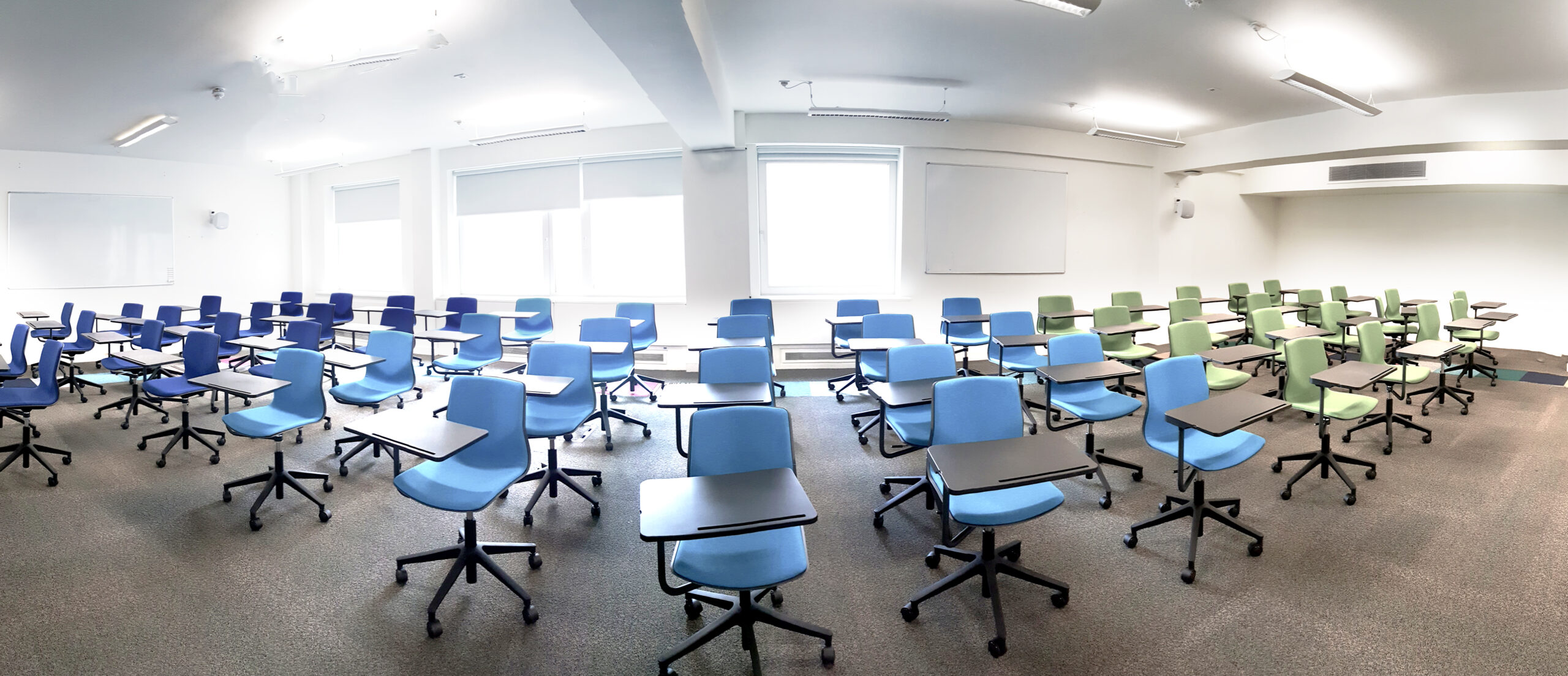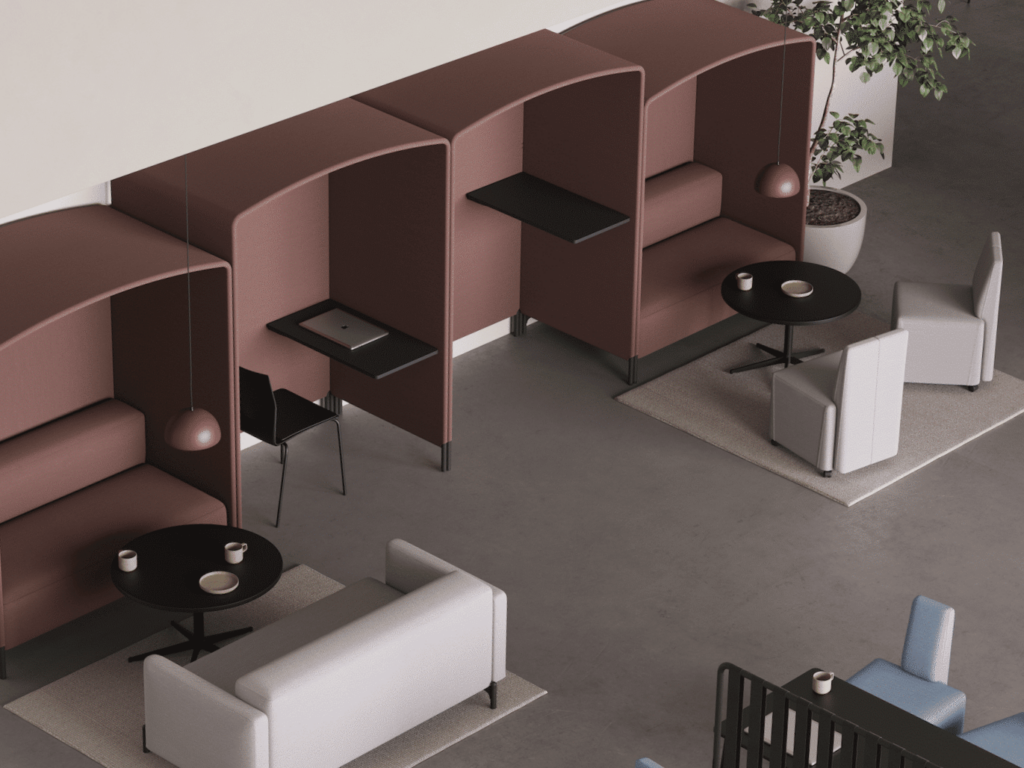In today’s educational landscape, creating a comfortable and healthy learning environment has become more important than ever. As students spend long hours sitting at desks, maintaining proper posture and minimising physical strain can significantly impact their health and overall academic performance. That’s where ergonomic furniture comes into play. Ergonomically designed classroom furniture supports students in a way that enhances their physical well-being while promoting focus and productivity.
The Importance of Ergonomics in Education
Ergonomics refers to the science of designing furniture to fit the physical needs of users, helping prevent discomfort and injury. In the context of education, ergonomic classroom furniture not only provides comfort but also plays a key role in ensuring that students’ posture is properly aligned throughout the day.
Reducing Strain and Supporting Posture
Proper ergonomics is about more than just comfort – it’s about preventing strain. Over time, poor posture caused by inadequate furniture can lead to musculoskeletal problems, headaches, and even long-term injury. Ergonomic furniture is designed to align the body in a way that minimises strain on key areas, such as the spine, shoulders, and wrists.
For example, an ergonomic chair with lumbar support can help prevent lower back pain by supporting the natural curve of the spine. Height-adjustable desks give students the ability to change their working position, promoting better blood circulation and reducing the risk of repetitive strain injuries from prolonged sitting.
The Benefits of Ergonomic Furniture for Students
Improved Posture: Ergonomic furniture supports the natural alignment of the body, helping students maintain good posture throughout the day.
Enhanced Focus: When comfortable and free from discomfort, students can focus more on learning and less on their physical discomfort.
Increased Productivity: Comfort and flexibility promote productivity, allowing students to remain engaged in lessons and group work without feeling fatigued.
Prevention of Long-Term Health Issues: By investing in ergonomic furniture, schools can help reduce the risk of long-term issues such as back pain, repetitive strain injuries, and poor circulation.
Key Ergonomic Furniture for Student Health
Several elements of ergonomic furniture can specifically benefit students by promoting good posture, comfort, and engagement. Let’s explore some of the most impactful solutions.
Ergonomic Chairs: The Backbone of Comfort
One of the most crucial pieces of furniture in any classroom is the chair. Traditional classroom chairs often force students into awkward postures, contributing to back and neck pain. In contrast, ergonomic chairs are designed to provide better support, particularly for the spine.
For instance, the FourSure® 66 chair offers exceptional comfort with adaptive features that cater to a variety of seating needs. Whether in a classroom or collaborative environment, it’s designed to support students in maintaining proper posture while engaging in activities. It also features a built-in swivel function and optional integration with the InnoTab®, making it easy to switch between lecture-style seating and collaborative group work setups, all whilst helping students maintain a good posture and stay comfortable no matter the activity.
A chair like the FourSure® 66 ensures that students aren’t slouching, but instead, sitting with their feet flat on the floor, their knees at a 90-degree angle, and their backs fully supported.

Desk Height Options: Offering Stability and Comfort
Having the right desk height is essential for supporting students’ posture and reducing physical strain. So, offering different height options for desks can help to meet the diverse ergonomic needs of students.
The FourPeople Work Hut for example provides two height options for desks: one designed for sitting and one for standing. This simple yet effective design offers students the choice to sit or stand, promoting a dynamic and comfortable learning environment.
The ability to choose between sitting and standing is an ideal solution for reducing the negative effects of prolonged sitting. Standing desks encourage movement and improve circulation, helping to combat fatigue and maintain focus throughout the day. Meanwhile, the sitting desks provide a stable, comfortable surface for students to engage in their work without straining. By providing options, students can adapt to the most comfortable position for their tasks, promoting better health, posture, and productivity.

Desk Layout and Organisation: Enhancing Comfort and Efficiency
The arrangement of desks and workstations within a classroom can significantly affect students’ comfort, posture, and focus. Proper furniture layout and organisation not only improve the flow of the space but also ensure that students have enough personal space to work comfortably without feeling cramped or distracted.
A well-organised classroom with ergonomic furniture provides students with clear, defined workspaces where they can sit or stand comfortably. Spacing out desks properly helps reduce the risk of physical strain caused by awkward movements or slumping. Additionally, a thoughtful layout encourages interaction, collaboration, and movement, which all contribute to an environment that fosters both physical well-being and academic performance.
Incorporating ergonomic furniture into classroom designs with proper desk spacing and organisation creates a balanced, efficient environment that supports a range of activities – whether it’s individual study or group work.
Desk Surface and Workspace Design for Comfort and Productivity
The design of desk surfaces is crucial in promoting both comfort and productivity in the classroom. A spacious desk with room for tools, notebooks, and personal items helps students stay organised, reducing clutter and unnecessary stress.
Ergonomic desks are designed with features that support healthy work habits, such as ample space for a laptop or textbook and built-in cable management to keep cords out of the way. Ergonomic accessories like wrist supports can also make a huge difference by helping students maintain proper alignment when writing or typing, which can reduce the risk of repetitive strain injuries and discomfort.
Well-designed desk surfaces also promote proper posture, keeping students’ arms at a comfortable angle and supporting their body’s natural alignment. This minimises strain on the wrists, shoulders, and neck, encouraging long periods of productive work without physical discomfort.
By choosing desks that offer ergonomic features and enough workspace, along with key accessories like wrist supports, schools ensure students can comfortably focus on their tasks without feeling cramped or uncomfortable.
Ergonomic Furniture in Education
The role of ergonomic furniture in education cannot be overstated. Providing students with well-designed chairs, desks, and tables that support their physical health contributes to a more productive, comfortable, and focused learning environment. Furniture solutions like the FourSure® 66 chair and the FourPeople Work Hut are designed with both comfort and adaptability in mind, supporting students in maintaining proper posture and reducing physical strain, whether in traditional lecture settings or dynamic, collaborative workspaces.
As schools continue to prioritise student health, incorporating ergonomic furniture is a simple yet highly effective way to ensure that students are not only learning effectively but also taking care of their physical well-being. With the right tools, students can thrive both academically and physically.


